

You have an Azure subscription that contains 10 virtual machines on a virtual network.
You need to create a graph visualization to display the traffic flow between the virtual machines.
What should you do from Azure Monitor?
Correct Answer:
D
🗳️
HOTSPOT -
You plan to create an Azure Storage account in the Azure region of East US 2.
You need to create a storage account that meets the following requirements:
✑ Replicates synchronously
✑ Remains available if a single data center in the region fails
How should you configure the storage account? To answer, select the appropriate options in the answer area.
NOTE: Each correct selection is worth one point.
Hot Area: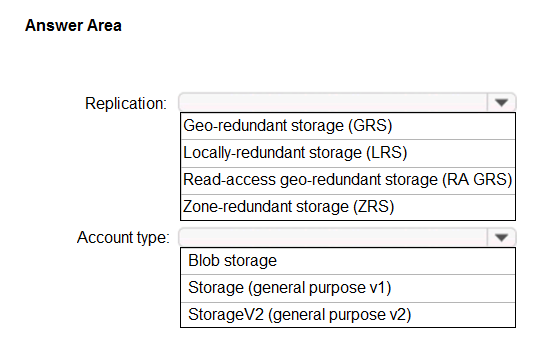
Correct Answer:
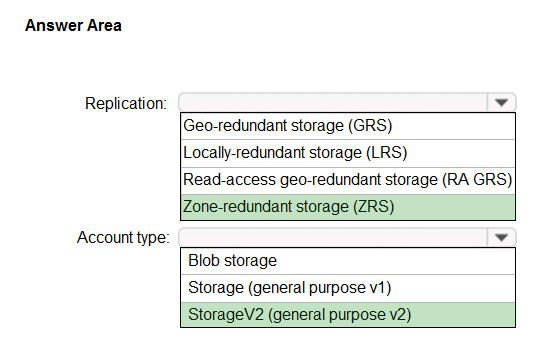
Box 1: Zone-redundant storage (ZRS)
Zone-redundant storage (ZRS) replicates your data synchronously across three storage clusters in a single region.
LRS would not remain available if a data center in the region fails
GRS and RA GRS use asynchronous replication.
Box 2: StorageV2 (general purpose V2)
ZRS only support GPv2.
Reference:
https://docs.microsoft.com/en-us/azure/storage/common/storage-redundancy https://docs.microsoft.com/en-us/azure/storage/common/storage-redundancy-zrs
HOTSPOT -
You plan to deploy an Azure virtual machine named VM1 by using an Azure Resource Manager template.
You need to complete the template.
What should you include in the template? To answer, select the appropriate options in the answer area.
NOTE: Each correct selection is worth one point.
Hot Area: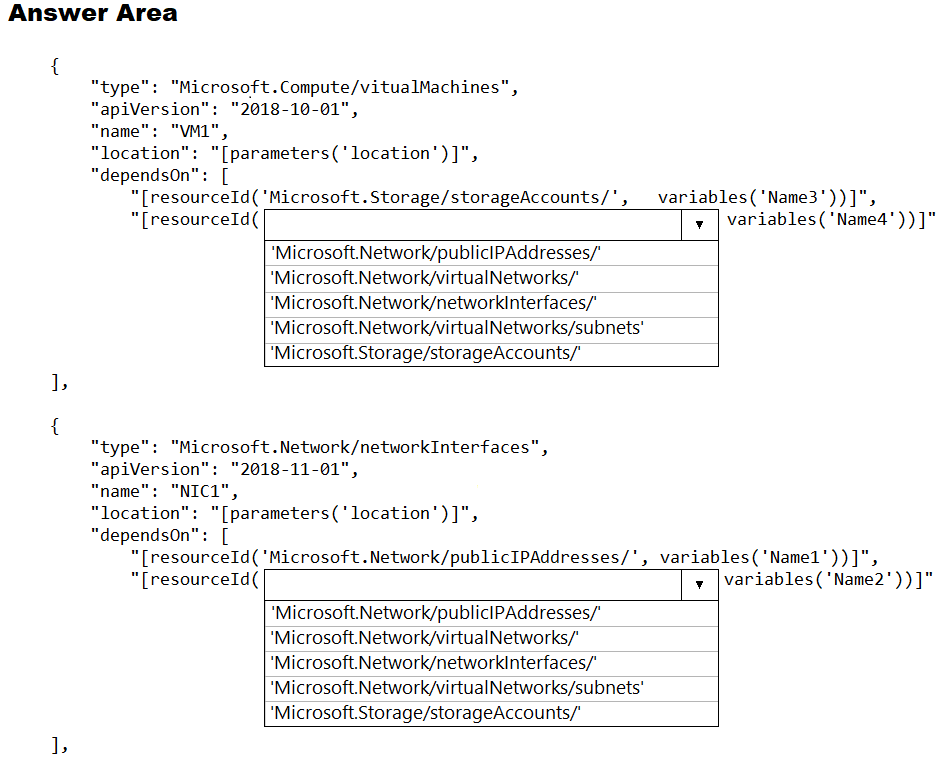
Correct Answer:
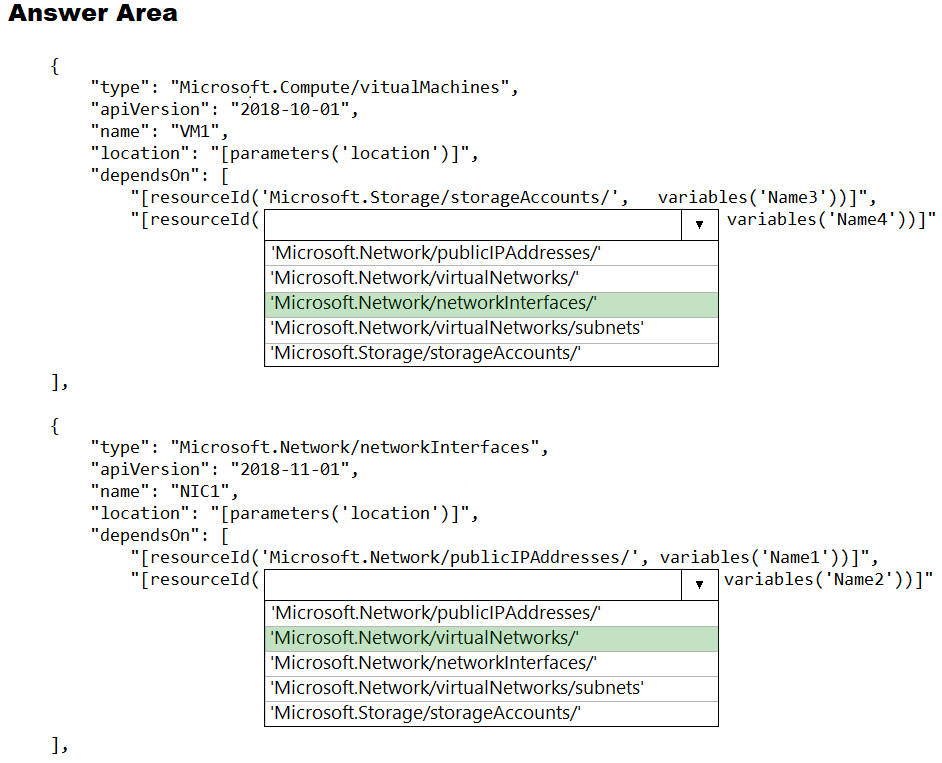
Within your template, the dependsOn element enables you to define one resource as a dependent on one or more resources. Its value can be a comma- separated list of resource names.
Box 1: 'Microsoft.Network/networkInterfaces'
This resource is a virtual machine. It depends on two other resources:
Microsoft.Storage/storageAccounts
Microsoft.Network/networkInterfaces
Box 2: 'Microsoft.Network/virtualNetworks/'
The dependsOn element enables you to define one resource as a dependent on one or more resources. The resource depends on two other resources:
Microsoft.Network/publicIPAddresses
Microsoft.Network/virtualNetworks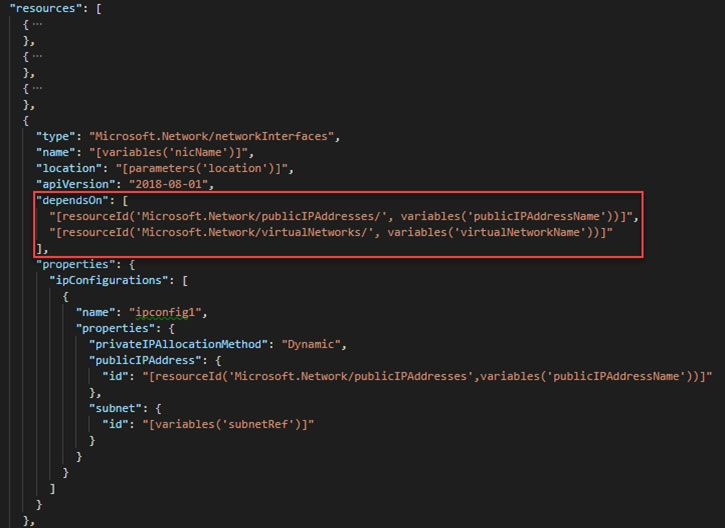
Reference:
https://docs.microsoft.com/en-us/azure/azure-resource-manager/resource-manager-tutorial-create-templates-with-dependent-resources
HOTSPOT -
Your network contains an Active Directory domain named adatum.com and an Azure Active Directory (Azure AD) tenant named adatum.onmicrosoft.com.
Adatum.com contains the user accounts in the following table.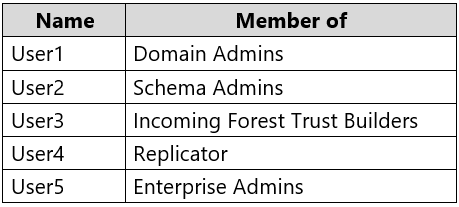
Adatum.onmicrosoft.com contains the user accounts in the following table.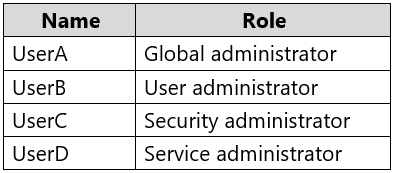
You need to implement Azure AD Connect. The solution must follow the principle of least privilege.
Which user accounts should you use in Adatum.com and Adatum.onmicrosoft.com to implement Azure AD Connect? To answer, select the appropriate options in the answer area.
NOTE: Each correct selection is worth one point.
Hot Area: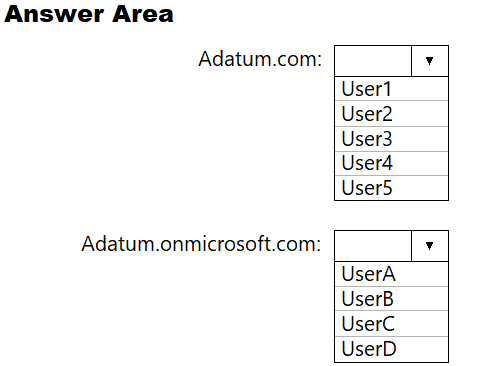
Correct Answer:
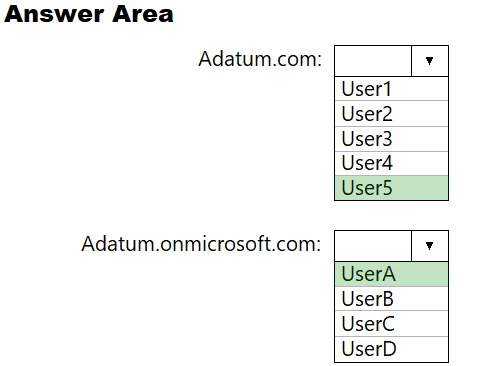
Box 1: User5 -
In Express settings, the installation wizard asks for the following:
AD DS Enterprise Administrator credentials
Azure AD Global Administrator credentials
The AD DS Enterprise Admin account is used to configure your on-premises Active Directory. These credentials are only used during the installation and are not used after the installation has completed. The Enterprise Admin, not the Domain Admin should make sure the permissions in Active Directory can be set in all domains.
Box 2: UserA -
Azure AD Global Admin credentials are only used during the installation and are not used after the installation has completed. It is used to create the Azure AD
Connector account used for synchronizing changes to Azure AD. The account also enables sync as a feature in Azure AD.
Reference:
https://docs.microsoft.com/en-us/azure/active-directory/connect/active-directory-aadconnect-accounts-permissions
You have an Azure subscription that contains 100 virtual machines.
You have a set of Pester tests in PowerShell that validate the virtual machine environment.
You need to run the tests whenever there is an operating system update on the virtual machines. The solution must minimize implementation time and recurring costs.
Which three resources should you use to implement the tests? Each correct answer presents part of the solution.
NOTE: Each correct selection is worth one point.
Correct Answer:
ABE
🗳️
HOTSPOT -
You have an Azure subscription that contains the resource groups shown in the following table.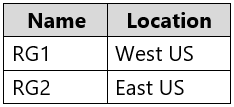
You create an Azure Resource Manager template named Template1 as shown in the following exhibit.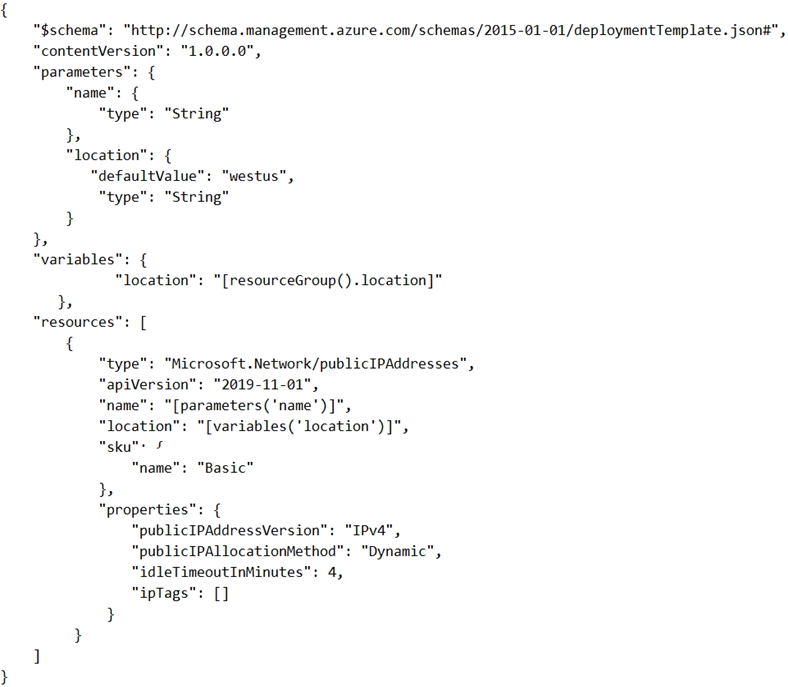
From the Azure portal, you deploy Template1 four times by using the settings shown in the following table.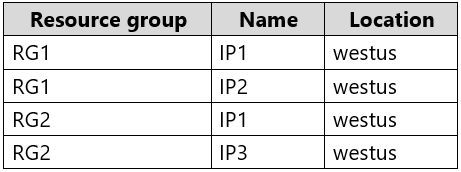
What is the result of the deployment? To answer, select the appropriate options in the answer area.
NOTE: Each correct selection is worth one point.
Hot Area: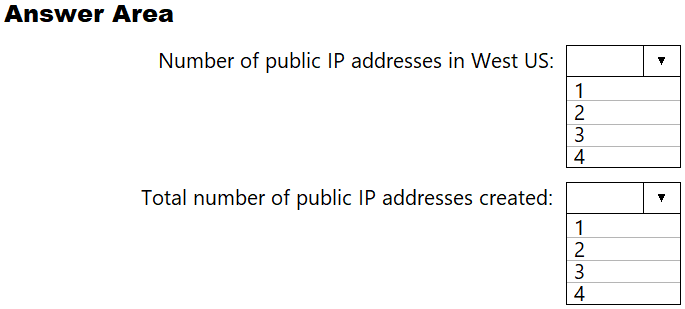
Correct Answer:
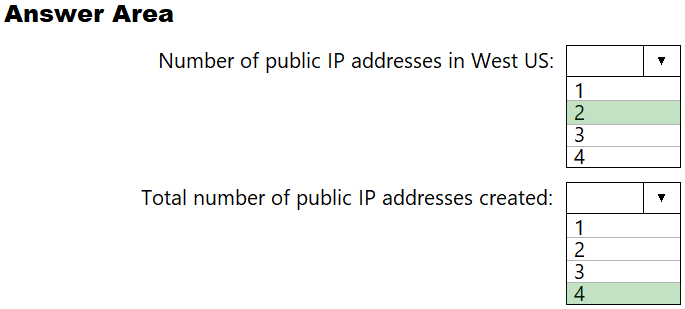
HOTSPOT -
You have an Azure subscription that contains multiple resource groups.
You create an availability set as shown in the following exhibit.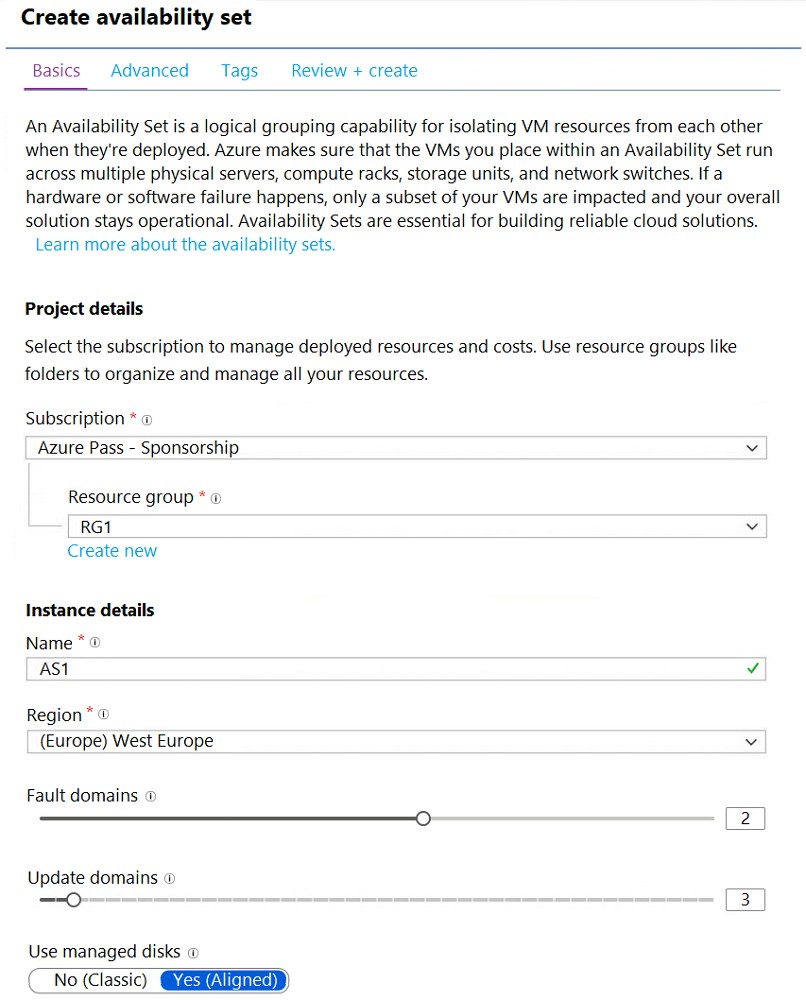
You deploy 10 virtual machines to AS1.
Use the drop-down menus to select the answer choice that completes each statement based on the information presented in the graphic.
NOTE: Each correct selection is worth one point.
Hot Area: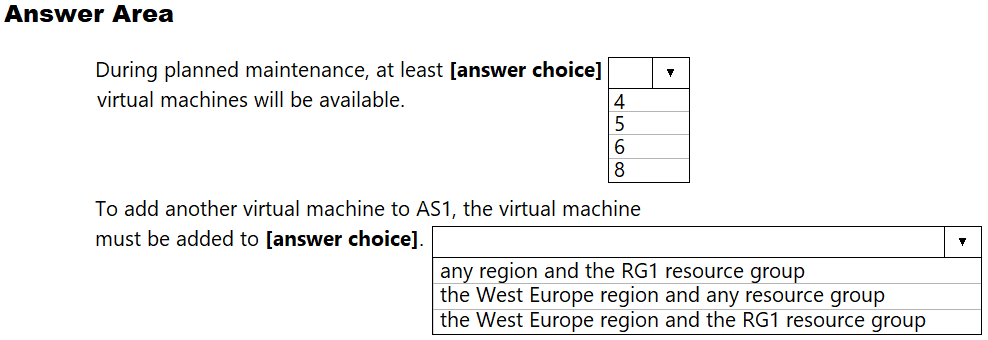
Correct Answer:
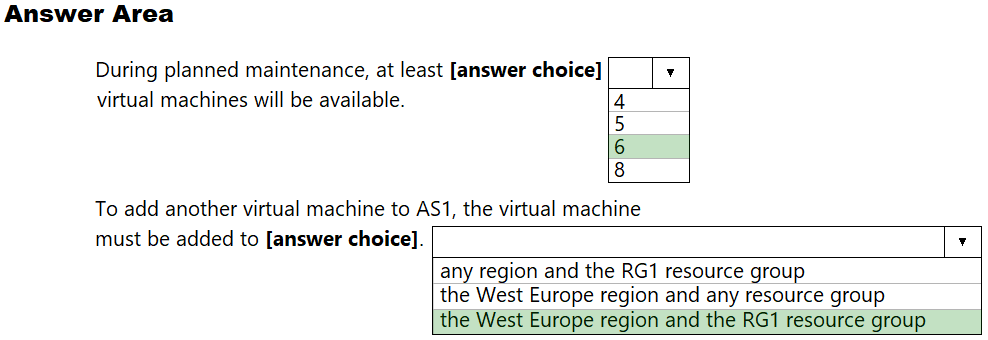
Box 1: 6 -
Two out of three update domains would be available, each with at least 3 VMs.
An update domain is a group of VMs and underlying physical hardware that can be rebooted at the same time.
As you create VMs within an availability set, the Azure platform automatically distributes your VMs across these update domains. This approach ensures that at least one instance of your application always remains running as the Azure platform undergoes periodic maintenance.
Box 2: the West Europe region and the RG1 resource group
Reference:
https://docs.microsoft.com/en-us/azure/virtual-machines/windows/regions
You have an Azure subscription that contains an Azure Log Analytics workspace.
You have a resource group that contains 100 virtual machines. The virtual machines run Linux.
You need to collect events from the virtual machines to the Log Analytics workspace.
Which type of data source should you configure in the workspace?
Correct Answer:
A
🗳️
Syslog is an event logging protocol that is common to Linux. Applications will send messages that may be stored on the local machine or delivered to a Syslog collector. When the Log Analytics agent for Linux is installed, it configures the local Syslog daemon to forward messages to the agent. The agent then sends the message to Azure Monitor where a corresponding record is created.
Reference:
https://docs.microsoft.com/en-us/azure/azure-monitor/platform/data-sources-custom-logs
You have a virtual network named VNet1 as shown in the exhibit. (Click the Exhibit tab.)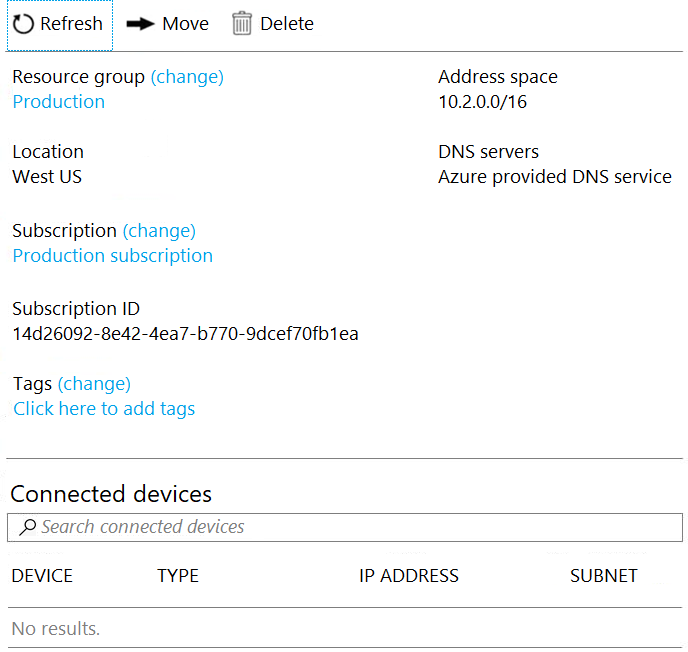
No devices are connected to VNet1.
You plan to peer VNet1 to another virtual network named VNet2. VNet2 has an address space of 10.2.0.0/16.
You need to create the peering.
What should you do first?
Correct Answer:
D
🗳️
The virtual networks you peer must have non-overlapping IP address spaces. The exhibit indicates that VNet1 has an address space of 10.2.0.0/16, which is the same as VNet2, and thus overlaps. We need to change the address space for VNet1.
Reference:
https://docs.microsoft.com/en-us/azure/virtual-network/virtual-network-manage-peering#requirements-and-constraints
HOTSPOT -
You have an Azure Resource Manager template for a virtual machine named Template1. Template1 has the following parameters section.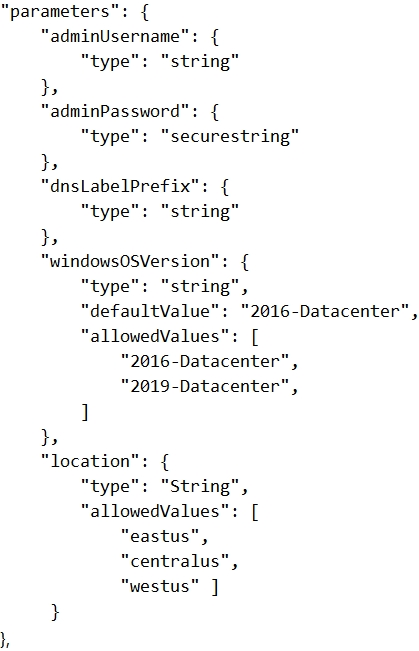
For each of the following statements, select Yes if the statement is true. Otherwise, select No.
NOTE: Each correct selection is worth one point.
Hot Area:
Correct Answer:

Box 1: Yes -
The Resource group is not specified.
Box 2: No -
The default value for the operating system is Windows 2016 Datacenter.
Box 3: Yes -
Location is no default value.
Reference:
https://docs.microsoft.com/bs-latn-ba/azure/virtual-machines/windows/ps-template